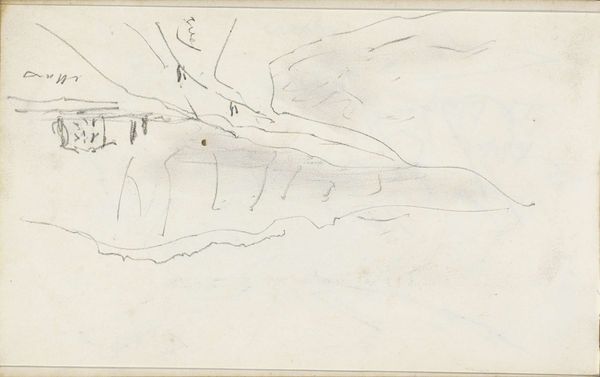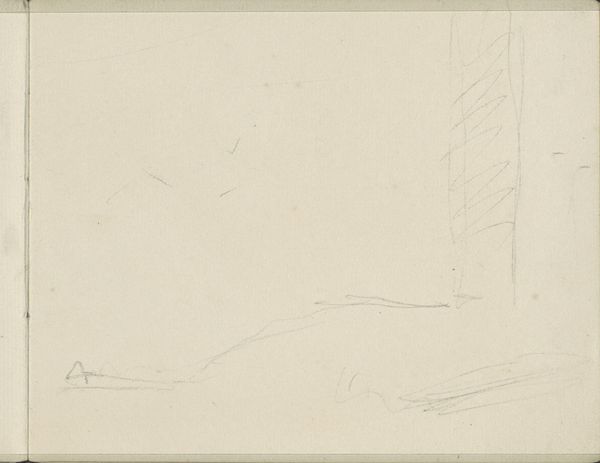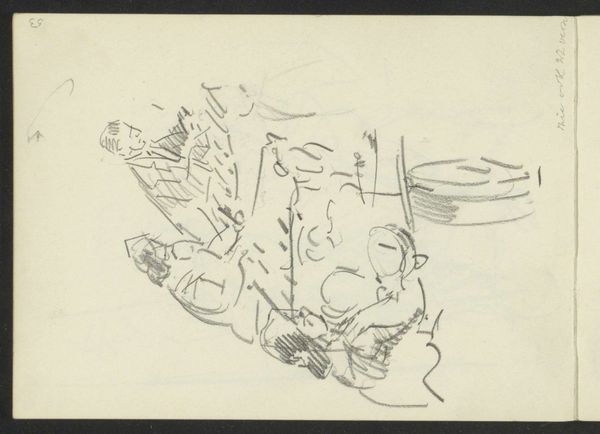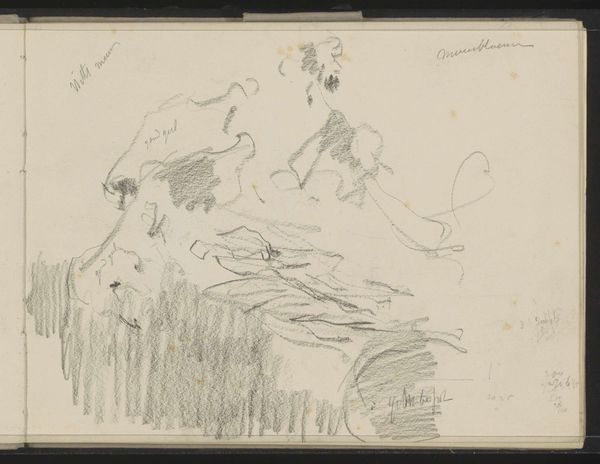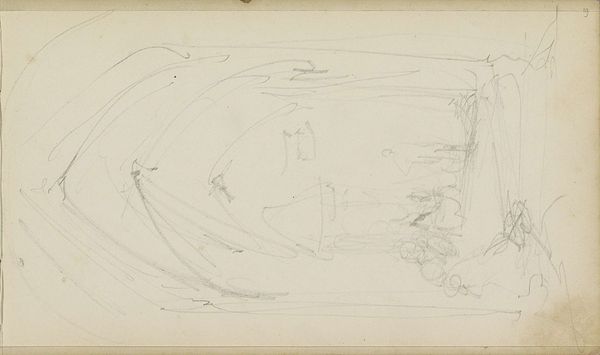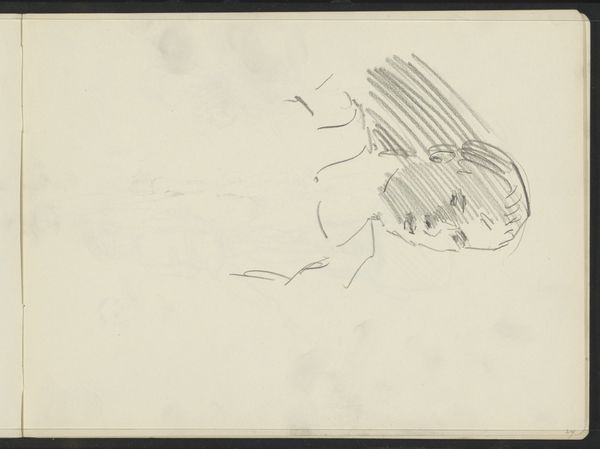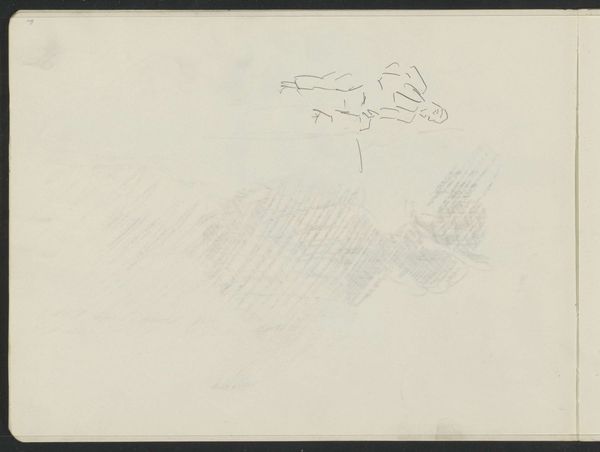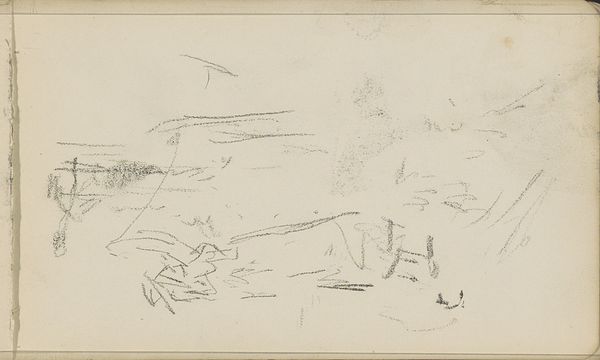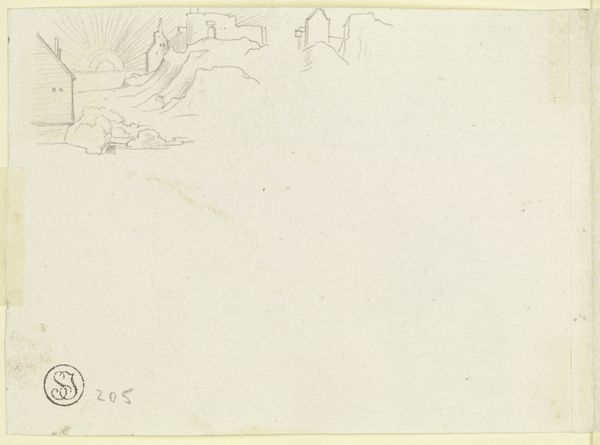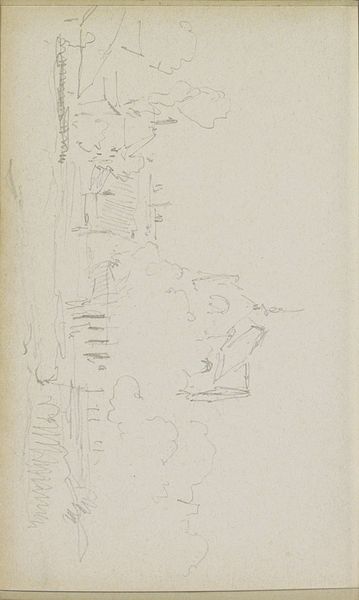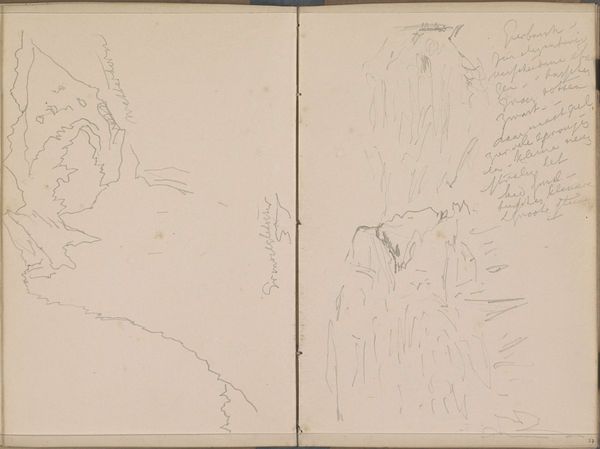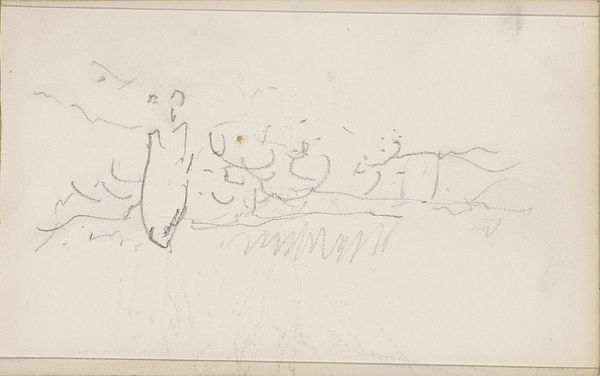
Copyright: Rijks Museum: Open Domain
Curator: Before us is "Figuurstudies", or "Figure Studies", a pencil drawing by Isaac Israels, dating roughly from the 1915s to the 1925s. It’s part of the Rijksmuseum’s collection. What's your initial reaction? Editor: Well, my first thought is ethereality. The figures seem to emerge faintly from the paper itself, like specters. It’s dreamlike, almost like half-formed memories clinging to the page. There’s a sense of fragility that resonates. Curator: That’s a keen observation. For me, it's the suggestion of a multitude contained within this single sheet. Israels was deeply engaged with Impressionism, capturing fleeting moments, and the medium itself contributes to that. Graphite allows for a wonderful immediacy, doesn't it? It preserves that very first burst of perception. Editor: Precisely. And in this context, these "Figure Studies," seemingly informal, almost covert, become imbued with significance. It asks us to consider: whose stories aren't usually told, whose images are marginalized and how the way they're drawn reflects or challenges that marginalization. Curator: It invites a symbolic reading, absolutely. Are these figures caught in private reflection, or are they observed by others? Perhaps they mirror back to us the collective unconscious, those archetypal images residing just below conscious thought, seeking to be made manifest. Editor: And beyond the symbolism, consider the power dynamic inherent in the artistic gaze. Israels was positioned to record, but what about the subjects of the studies themselves? We must think critically about representation, and its intersection with race, class, gender identity and beyond. Do the sketches flatten their humanity, or elevate it, through his hand? Curator: That's something that troubles me. He has that wonderful talent, but how much control of representation lies on a famous artist against normal citizens is really questionable, even now. But with Israels the immediacy of Impressionism does present the possibility that we see the moment of connection itself, before any potential exploitation occurs. Maybe these lines mark only pure seeing. Editor: A point well taken, but seeing is never truly pure. Art can reflect and perpetuate systems of power, so recognizing these elements makes for a more informed, progressive view. Curator: And acknowledging the complexity can inspire in all a more responsible understanding of historical perspectives, indeed. Editor: Definitely! Considering different angles definitely elevates art appreciation!
Comments
No comments
Be the first to comment and join the conversation on the ultimate creative platform.

